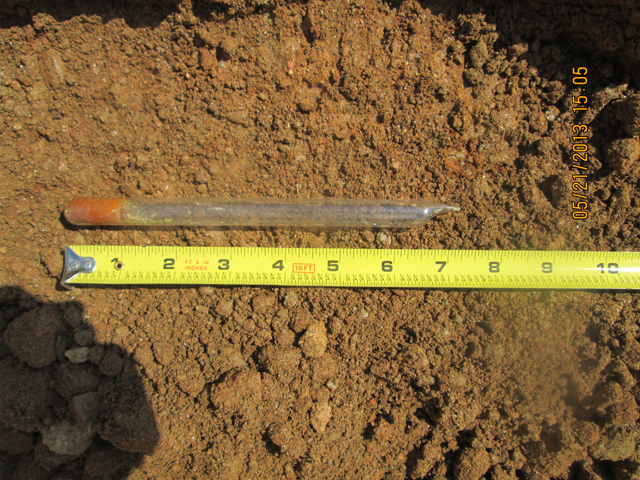
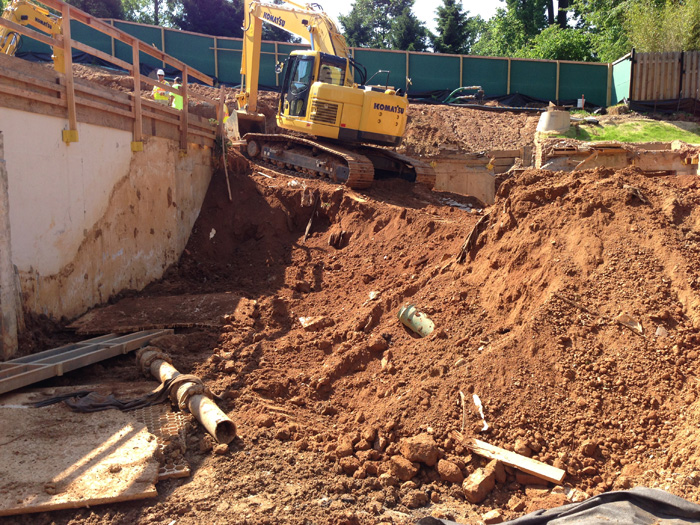
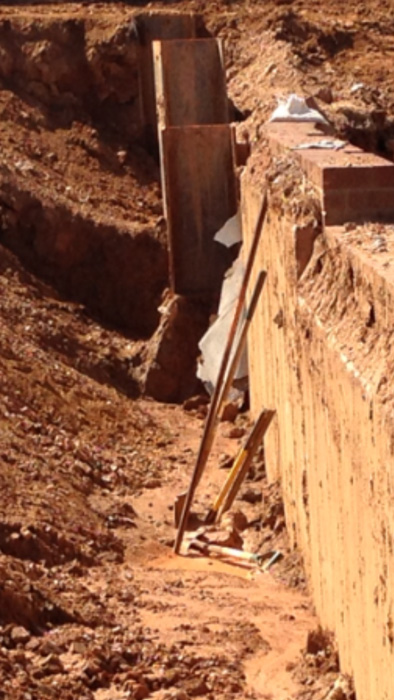
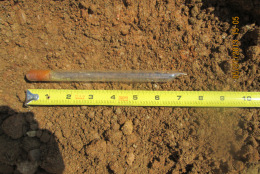
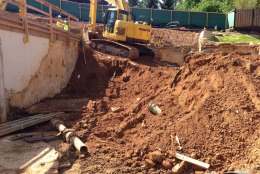
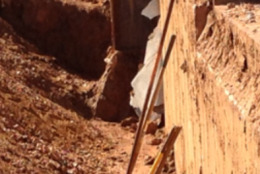
UPDATE: Monday – 6/17/2013, 11:11 p.m. ET
WASHINGTON — WTOP has learned the furlough of government workers will mean a delay in the toxic cleanup at Spring Valley near American University.
The U.S. Corps of Army Engineers says the furlough would limit them to 32 hours a week, instead of the 60 that is needed.
They continue to build the structure that would capture and filter any dangerous chemicals during the cleanup of the World War One munitions site. But the actual digging in the area where they expect to find remnants will be delayed from Aug. 5 until the furlough ends the week of Sept. 23.
EARLIER: Friday – 5/31/2013, 4:12pm ET
WASHINGTON – The suspect test tube that halted digging at the Spring Valley WWI munitions site cleanup was found to not contain any chemical agent.
Digging will resume at the site, officials say.
EARLIER: Thursday – 5/30/2013, 12:06pm ET
WASHINGTON – The discovery of a sealed test tube has caused digging to temporarily cease at the cleanup of a World War I munitions testing ground, in the Spring Valley neighborhood, on the edge of the American University campus.
The thin, glass tube, containing approximately 1 inch of solids at one end was discovered May 21, and is being tested, according to the U.S. Army Corps of Engineers in Baltimore, the agency conducting the cleanup at the university-owned residential property at 4825 Glenbrook Rd., NW.
The discovery did not trigger air monitors installed to detect dangerous chemicals in the air, so there was never any risk to workers or the community, according to the Army Corps of Engineers.
“We are running air monitoring at the excavation site and the perimeter of the work zone, and there were no air detections for chemical agents,” Spring Valley Project Manager Brenda Barber tells WTOP.
“We’ve not had any detections of chemical agents throughout the excavation,” she says.
Barber says lab results are expected in the next day or two.
“For now, no additional intrusive work will be done at the site,” Barber says.
Bulldozers demolished the home in November. It was built atop the former American University Experiment Station, where the United States Army researched and tested chemical agents and weapons.
The cleanup effort is about to enter its most difficult phase — removal of a concrete basement beneath the home. Scientists have pictures and records that document an untouched site with weapons buried beneath the slab.
Standing in street clothes in what was the sloped backyard of the home, Barber says the test tube was discovered along a brick retaining wall, outside what engineered have labeled the “high probability area” of finding chemical warfare material.
While Barber says digging of untouched areas will stop until lab researchers determine the contents of the test tube, crews will continue to move “clean soil, that has already been screened and sampled” off the property.
Cranes have arrived to install filtration equipment and a pressurized tent that will be used to assure neighborhood safety during the excavation of the slab.
Since 2000, the Corps has removed more than 500 munitions, 400 pounds of laboratory glassware and 100 tons of contaminated soil from the site.
The former owner of the home filed a federal lawsuit, claiming family members suffered ill effects from chemicals buried beneath the home.
The attorney for the home’s former owners told WTOP his clients’ symptoms disappeared in the months after moving from the home.
A federal judge dismissed the suit in 2003, and the U.S. Court of Appeals affirmed the dismissal.
Still, some neighbors express concern about safety, given the toxic nature of weapons buried at the site.
The Corps, which posts regular updates about the cleanup on its website, says after the excavations, the property will be restored so it’s safe for redevelopment.
Click here for a large map of where the test tub was found.
Related Story:
- Crane arrives, cleanup to begin at WWI munitions test site
- D.C. house over ‘mother of all toxic dumps’ to be razed
Follow @WTOP on Twitter.







